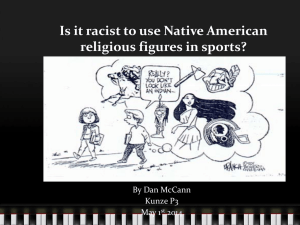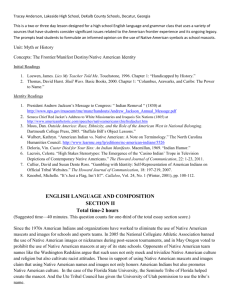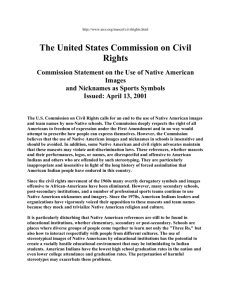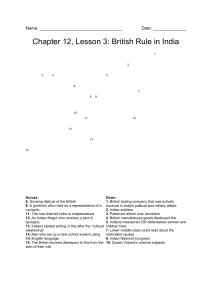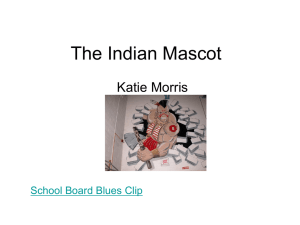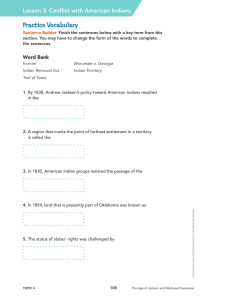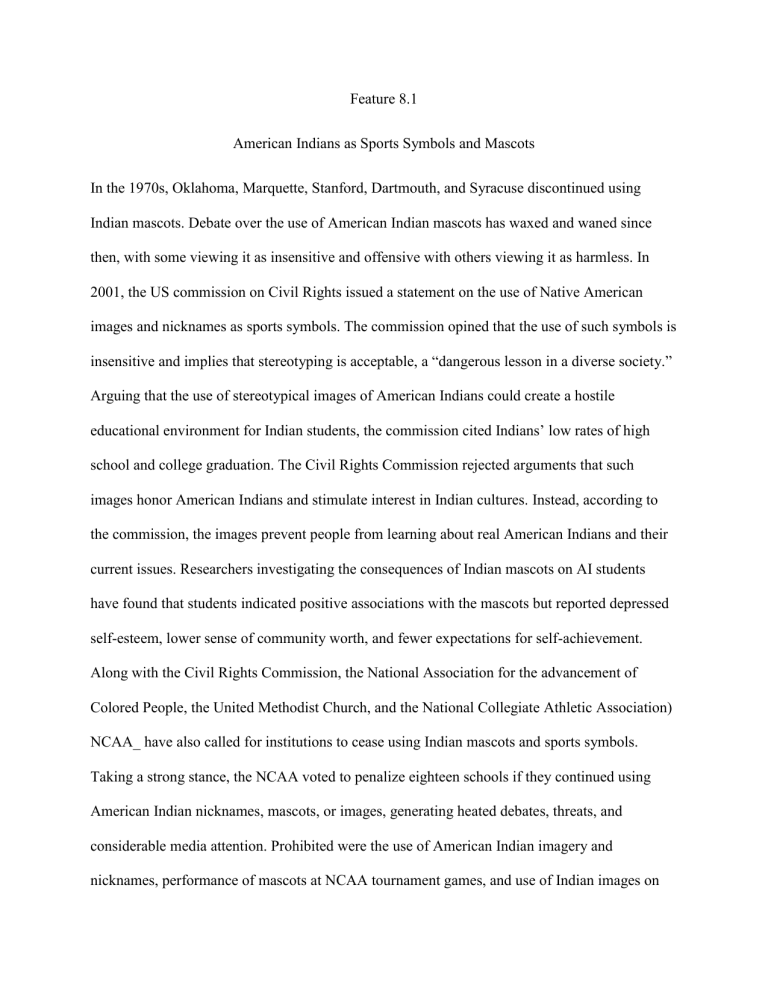
Feature 8.1 American Indians as Sports Symbols and Mascots In the 1970s, Oklahoma, Marquette, Stanford, Dartmouth, and Syracuse discontinued using Indian mascots. Debate over the use of American Indian mascots has waxed and waned since then, with some viewing it as insensitive and offensive with others viewing it as harmless. In 2001, the US commission on Civil Rights issued a statement on the use of Native American images and nicknames as sports symbols. The commission opined that the use of such symbols is insensitive and implies that stereotyping is acceptable, a “dangerous lesson in a diverse society.” Arguing that the use of stereotypical images of American Indians could create a hostile educational environment for Indian students, the commission cited Indians’ low rates of high school and college graduation. The Civil Rights Commission rejected arguments that such images honor American Indians and stimulate interest in Indian cultures. Instead, according to the commission, the images prevent people from learning about real American Indians and their current issues. Researchers investigating the consequences of Indian mascots on AI students have found that students indicated positive associations with the mascots but reported depressed self-esteem, lower sense of community worth, and fewer expectations for self-achievement. Along with the Civil Rights Commission, the National Association for the advancement of Colored People, the United Methodist Church, and the National Collegiate Athletic Association) NCAA_ have also called for institutions to cease using Indian mascots and sports symbols. Taking a strong stance, the NCAA voted to penalize eighteen schools if they continued using American Indian nicknames, mascots, or images, generating heated debates, threats, and considerable media attention. Prohibited were the use of American Indian imagery and nicknames, performance of mascots at NCAA tournament games, and use of Indian images on athletes’, cheerleaders’, and band uniforms. The Florida State University Seminoles and the University of Illinois Fighting Illini were on the original list of eighteen schools targeted by the NCAA. University administrators, alumni, supporters and politicians from Florida were outraged at the proposed sanctions and vowed to pursue all legal avenues available to fight the NCAA’s decision. In both states, legislation was introduced to solidify the use of the Indian symbols and mascots, although the legislation did not pass. After reviewing statements of apparent support for continued use of the symbols from Seminoles in Florida and Oklahoma, the NCAA decided to allow FSU to use the Seminole mascots and symbols, removing FSU from the list of restricted schools. However, some American Indians continue to protest the use of such images, focusing on the political pressures placed on the Florida Seminoles to grant their approval of the use of the mascot. According to NCAA Senior Vice President Bernard Franklin, “The decision of a namesake sovereign tribe, regarding when and how its name and imagery can be used, must be respected even when others may not agree”. Franklin said that the NCAA will handle reviews from other schools on a case-by-case basis and that the NCAA remains committed to ensuring an atmosphere of respect and sensitivity for those participating in and attending its championships. In contrast to FSU, Illinois discontinued in 2007 its use of Chief Illiniwek, the mascot well known to students, alumni, and supporters. Although the decision making was contentious, the board of trustees; vote was implemented campus wide. A statement by the university’s Office of Inclusion and Intercultural Relations stated that “the continued use of Chief Illiniwek is an obstacle to fulfilling our mission of promoting a diverse and welcoming environment that supports full inclusion for all members of the University community. We strive to respect the human dignity of all individuals and communities… Therefore, the retirement of Chief Illiniwek is in the best interest of our community.”
